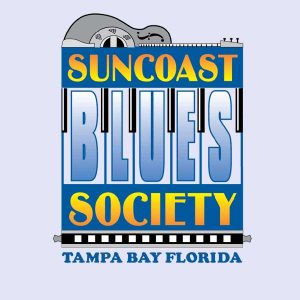Book Review: Up Jumped the Devil: The Real Life of Robert Johnson
Book Review: Up Jumped the Devil: The Real Life of Robert Johnson
Every popular music genre has its stories, legends, and famous characters. For the Blues, no legend is bigger than the story of Robert Johnson. As the tale goes, on a clear Mississippi night, Robert went down to the crossroads of Highway 61 and Highway 49 and struck a deal with the Devil, selling his soul for the ability to play guitar better than any man alive.
The story of Robert Johnson and the Devil has been around for almost 90 years. While it lurked in Mississippi for its first few decades, when the Blues gained popularity through Rock and Roll in the 1960s, Robert’s legend grew. Although there are many other stories of musicians dealing with the Devil, Robert Johnson’s is perhaps the most popular.

But is it true?
If you go to Clarksdale, Mississippi, home of the famous Crossroads sign, locals will be quick to tell you that Highway 61 isn’t where it used to be, and that the real crossroads is up the road, north of Clarksdale. There isn’t much at the old intersection of Highway 61 and Highway 49. There isn’t much to prove Robert Johnson was or wasn’t there.
Proof has been difficult to come by for Blues researchers. Fortunately for those of us who value the truth and who are curious what the real story is, writers Bruce Conforth and Gayle Dean Wardlow published Up Jumped the Devil: The Real Life of Robert Johnson in 2019. As a fellow writer who used the crossroads, Robert Johnson, and the Devil in my own novel Curveball at the Crossroads, I found Up Jumped the Devil incredible.
Up Jumped the Devil is the product of 50 years of research. Conforth and Wardlow conducted interviews with people throughout Mississippi for decades. They combed county and state census records, filings, and licenses. They dug through the archives and annals to find whatever they could about Robert Johnson.
It is hard to believe given today’s omnipotent media and communications that 100 years ago someone could disappear and reappear at whim, especially in the rural areas of the United States. At the time, most of Mississippi was rural and especially in the Black community, records were often sparse or done haphazardly. This makes retracing the steps of a wandering musician very difficult. And most Bluesmen were itinerant wanderers. They would travel from town to town, play different juke joints, rest with family or friends or new found lover, and take the train, hitch a ride, or walk to the next town for the next night’s gig. Although it is romanticized now, there was nothing glorious about the life of a Bluesman in the early 20th century.
There was one big way a wandering Bluesman in the 1930s could increase his value on the road and put money in his pocket – recording an album. Conforth and Wardlow go into detail about Johnson’s two recording sessions. They discuss the songs, the order in which they were recorded, and the technology used. They also detail the environment around Johnson and what Johnson might have been doing during his time in Dallas and San Antonio. Although electric Blues was starting to make inroads, and acoustic Blues was already losing favor in popular audiences when Johnson recorded, the record companies thought they had something in Johnson’s talent and unique style. Generations of musicians have Vocalion Records to thank.
Although I gave Up Jumped the Devil a 5-star rating on Goodreads.com, I have two critiques with the book. The first is that the legend of the deal at the crossroads is glossed over. I would like to have read a chapter on how the legend grew and how it has been displayed in media. Conforth and Wardlow’s premise is that they debunk the myth, but they give little background on how it has grown to its current stature. I guess for that I will have to read Adam Gussow’s Beyond the Crossroads: The Devil and the Blues Tradition (2017).
My second critique is the need to separate the art from the artist. Not of Robert Johnson, who while a guitar genius was also a heavy drinker and womanizer, but of writer Bruce Conforth. A highly recognized name in music history and former curator of the Rock and Roll Hall of Fame, Conforth’s reputation took a huge blow when he was accused of sexually harassing and stalking students while working as a professor at University of Michigan. He was recommended to resign after over ten years of accusations. Take knowledge from the book without praising the author.
Did Robert Johnson go to the crossroads and make a deal with the Devil? Some of his lyrics say he might have. If he didn’t, how did he learn a technique that has influenced the Blues and Rock ‘n’ Roll for decades? To find out, you will have to read Up Jumped the Devil: The Real Life of Robert Johnson.
Bio: Michael Lortz is a music and sports writer from Tampa. He has been a Blues fan for decades and has twice visited the Crossroads tourist marker in Clarksdale. He is the author of the Blues-baseball novel Curveball at the Crossroads.

